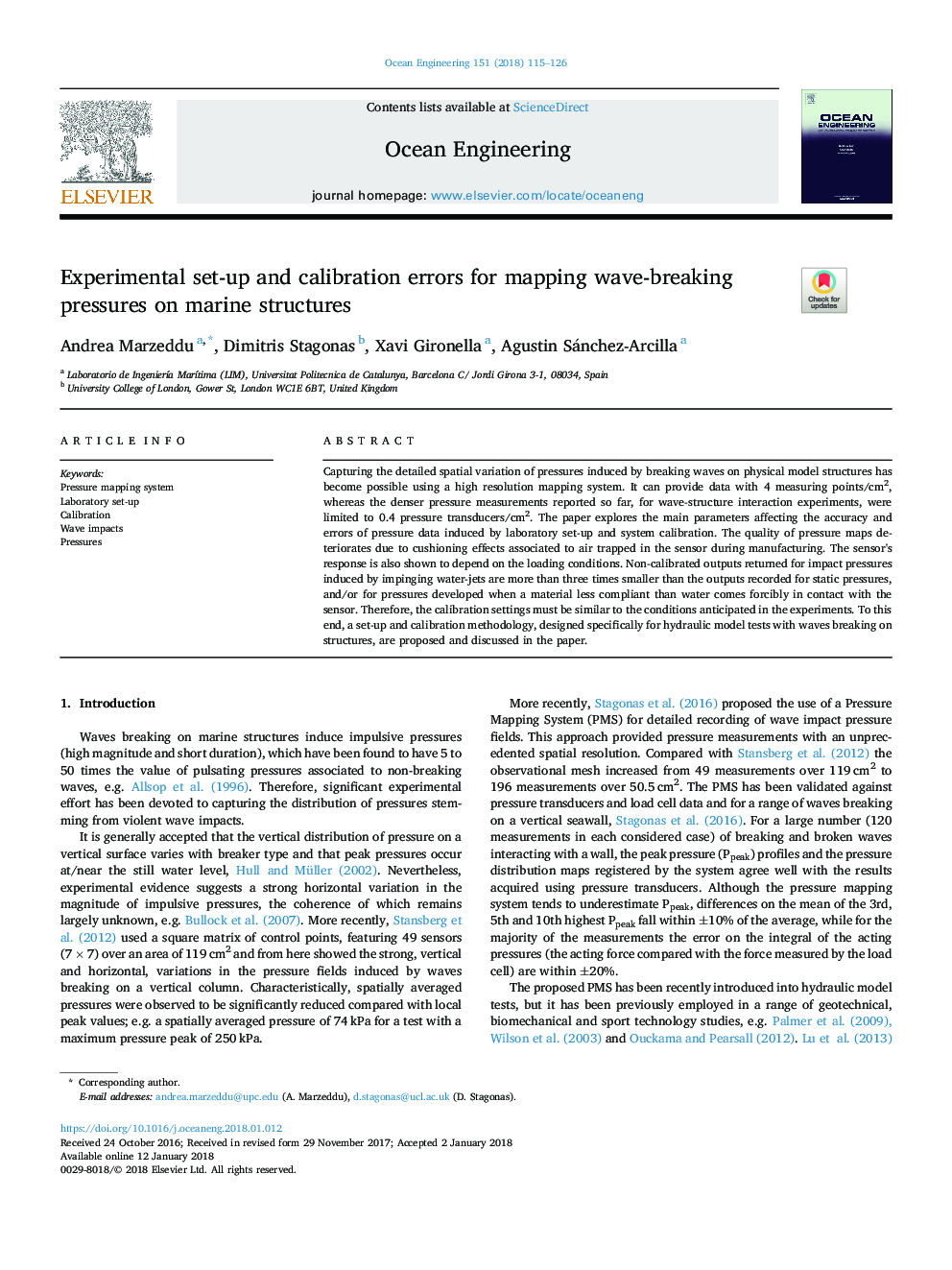| Article ID | Journal | Published Year | Pages | File Type |
|---|---|---|---|---|
| 8063262 | Ocean Engineering | 2018 | 12 Pages |
Abstract
Capturing the detailed spatial variation of pressures induced by breaking waves on physical model structures has become possible using a high resolution mapping system. It can provide data with 4 measuring points/cm2, whereas the denser pressure measurements reported so far, for wave-structure interaction experiments, were limited to 0.4 pressure transducers/cm2. The paper explores the main parameters affecting the accuracy and errors of pressure data induced by laboratory set-up and system calibration. The quality of pressure maps deteriorates due to cushioning effects associated to air trapped in the sensor during manufacturing. The sensor's response is also shown to depend on the loading conditions. Non-calibrated outputs returned for impact pressures induced by impinging water-jets are more than three times smaller than the outputs recorded for static pressures, and/or for pressures developed when a material less compliant than water comes forcibly in contact with the sensor. Therefore, the calibration settings must be similar to the conditions anticipated in the experiments. To this end, a set-up and calibration methodology, designed specifically for hydraulic model tests with waves breaking on structures, are proposed and discussed in the paper.
Keywords
Related Topics
Physical Sciences and Engineering
Engineering
Ocean Engineering
Authors
Andrea Marzeddu, Dimitris Stagonas, Xavi Gironella, Agustin Sánchez-Arcilla,
